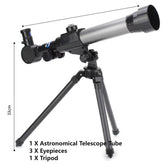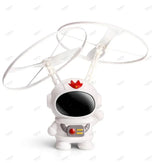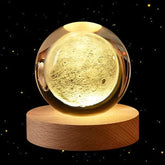Unveiling the Enigmatic Satellite Shaping Our World
The Moon—Earth’s ever-present celestial companion—has fascinated humanity for millennia. More than just a glowing orb in the night sky, the Moon plays a profound role in shaping life on our planet and continues to inspire scientific inquiry, cultural mythology, and even technological advancement. In this blog post, we’ll take an in-depth journey through the Moon’s origins, its physical characteristics, its influence on Earth, and the ongoing mysteries that make it one of the most captivating objects in our solar system.

The Birth of the Moon: A Cosmic Collision
Scientists widely support the Giant Impact Hypothesis as the most plausible explanation for the Moon’s formation. Roughly 4.5 billion years ago, a Mars-sized protoplanet—often named Theia—collided with the early Earth. The colossal impact ejected a massive amount of debris into orbit, which gradually coalesced under gravity’s pull to form the Moon. This violent birth explains why the Moon’s composition closely resembles Earth’s outer layers but with notable differences, such as its lack of volatile compounds.
Physical Features: More Than Just a Rocky Sphere
The Moon’s diameter is about 3,474 kilometers—roughly one-quarter that of Earth—making it the fifth largest moon in the solar system. Its surface is marked by:
-
Maria (plural of Mare): Dark basaltic plains created by ancient volcanic eruptions, visible as the “man in the moon” patterns.
-
Highlands: Bright, heavily cratered regions older than the maria.
-
Craters: Resulting from billions of years of asteroid and meteorite impacts, craters tell a story of a dynamic and violent history.
-
Regolith: A fine layer of dust and broken rock covers the surface, created by constant micrometeorite bombardment.

Beneath its surface, the Moon’s core is small and partially molten, contributing to a weak magnetic field that contrasts with Earth’s strong one.
The Moon’s Influence on Earth
The Moon’s gravitational pull exerts a powerful influence over our planet. Most notably, it drives the tides—rhythmic rising and falling of ocean waters. These tides affect marine ecosystems, influence weather patterns, and have even been suggested as a factor in the development of early life by creating intertidal zones rich in nutrients.
Moreover, the Moon stabilizes Earth’s axial tilt. Without the Moon’s gravitational tug, our planet’s tilt could vary wildly, causing extreme climate fluctuations. This stability has allowed for the relatively predictable seasons that support diverse ecosystems.

The Moon in Human Culture and Exploration
For thousands of years, the Moon has been a source of inspiration. From ancient myths attributing it to gods and goddesses, to calendars based on lunar cycles, its cultural significance is immense.
Scientifically, the Moon is a stepping stone to the stars. The Apollo missions of the 1960s and 70s marked humanity’s first steps beyond Earth, bringing back lunar samples that continue to inform research. Today, renewed interest in lunar exploration, including plans for sustainable bases, promises to unlock secrets about the early solar system and perhaps serve as a launchpad for Mars and beyond.
Mysteries That Remain
Despite decades of study, the Moon still holds mysteries:
-
Water Ice in Shadowed Craters: Discovered in permanently shadowed lunar poles, these ice deposits could provide vital resources for future explorers.
-
The Moon’s Formation Details: While the Giant Impact Hypothesis dominates, nuances about Theia’s composition and the timeline remain debated.
-
Moonquakes: Seismic activity on the Moon puzzles scientists as it hints at internal processes not fully understood.

Conclusion
The Moon is far more than a distant reflector of sunlight; it’s a dynamic world with a rich history intertwined with our own. As we continue to explore and study it, the Moon promises to deepen our understanding of planetary science, enrich human culture, and inspire the next era of discovery. The silent sentinel in the night sky remains a profound symbol of mystery, influence, and the unending quest to comprehend the cosmos.







































